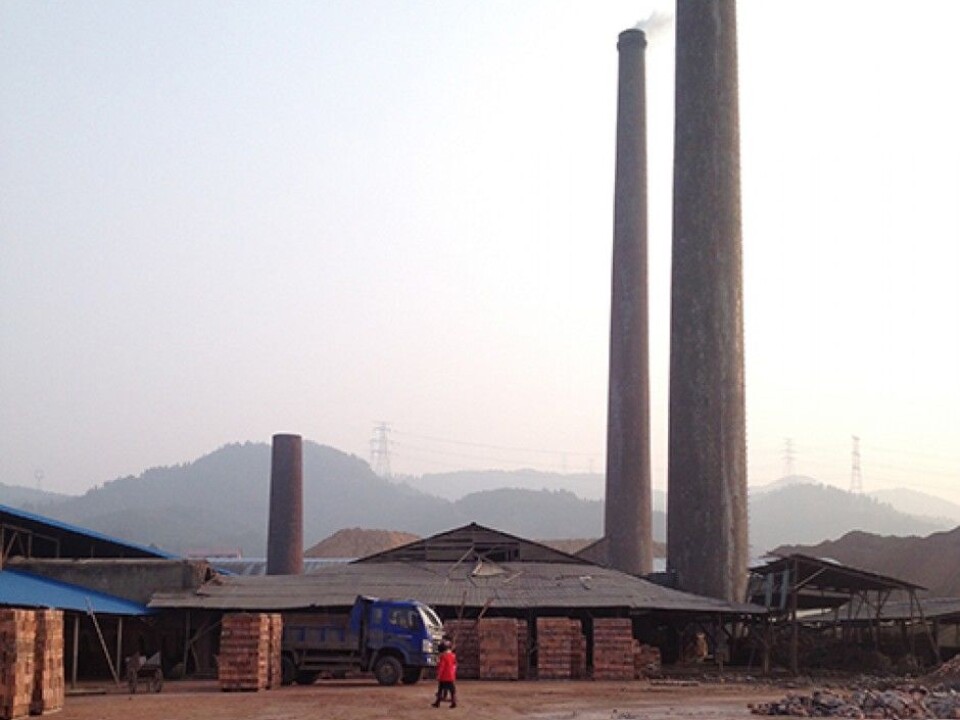An article from University of Oslo

Historic environmental awareness is changing China
In China, there has been an explosion of interest in the environment. Extreme air pollution is driving new formats of interaction between the political authorities and the people.
Denne artikkelen er over ti år gammel og kan inneholde utdatert informasjon.
In January 2013, the inhabitants of Beijing woke to find the city blanketed in a thick layer of smog, with record-high pollution levels, which according to research scientists were forty times higher than recommended safe levels.
The situation, combined with increased information on the consequences of air pollution, prompted nationwide discussion and heated debate about health and the environment.
"In the course of just two and a half years, interest in everything to do with the environment in China has simply exploded," says Professor Mette Halskov Hansen.
"This new and exceptional degree of interest has also triggered a new type of discussion. The population has new needs, new demands and new expectations. And our principal hypothesis is that the widespread awareness of environmental issues is driving new formats of interaction between the political authorities and the population, the scientific community, business and the media. But exactly what is happening in concrete terms, and how, we know little as yet. That is what we want to study."

Hansen is head of the Airborne project, which is a broad, interdisciplinary research project between the University of Oslo (UiO) and Zhejiang University.
"We take too much for granted where China is concerned ‒ and so there’s a great deal that we don’t understand. Above all, we don’t appreciate how much hard work is currently going into tackling pollution, or how great the challenges really are," explains Hansen.
"At the same time, it’s important that we know what is happening, for if China is unable to solve its climate and environmental problems, we will all suffer. China is the largest consumer of energy in the world, and coal still accounts for about 65 percent of the country’s energy consumption."
Several ongoing projects in Zhejiang Province
The Airborne research project is concentrated on Zhejiang Province, where a number of subprojects are already ongoing, in both urban and rural regions.

Zhejiang is one of China’s richest provinces, and not among those hardest hit by air pollution. On the contrary, the provincial capital, Hangzhou, is one of the greenest cities in the country, says Hansen. Zhejiang Province has been selected because of the close collaboration the University of Oslo has with ZhejiangUniversity, but also because it is possible in the province to conduct such an extensive and to some degree politically sensitive research project.
"One subproject involves studying how national policies to combat air pollution are being implemented at local level. That is something we know surprisingly little about," she says.
It’s more difficult to do research into local than national policies, Hansen goes on to explain, and mentions the restrictions on car use in Hangzhou use as an example of the measures the local authorities have already introduced.
"These restrictions had long been discussed but when the decision was finally made, the policy was implement suddenly overnight. People were appalled ‒ but they have to live with the restrictions. The question is nevertheless how. Local government authorities, the automotive industry and local populations all have different interests, but are obliged to act in relation to one another. We’re conducting interviews to find out more about such forms of interaction and the ongoing debate. Another interesting question is what happens to the vehicles that fail to satisfy the new environmental requirements. What becomes of them?"
The concept of air pollution arrived with western science

Another subproject deals with the Chinese concept of air pollution itself and how the debate has developed over the years in both traditional media and new social media. The idea of air pollution arrived with western science, which was introduced in China at the end of the 19th century. But the Chinese have had their own conceptions about air, and links between air and human health, for more than 2000 years. Which is why it is interesting to find out what significance these ideas can have today.
"Among other things, the term ‘smog’ was evidently not employed in Chinese media until the year 2012. Today, it is taken for granted that everyone is familiar with it," says Hansen.
A total of 30 000 articles, all digitized, are being reviewed in connection with the project, the earliest dating from 1833.
"The debate on air pollution and science is heated and interesting. There are now air pollution monitoring stations in all China’s largest towns and cities. You can download all the measurements and get pollution alarms on your app. And schools in towns with air pollution monitor the measurements every single day," says the researcher.
But, Hansen points out, it was only as recently as 2012 that the Chinese authorities began publishing pollution measurements. The authorities were pressurized into it by the general public after the US Embassy measured the air quality in Beijing and published its figures.
Air pollution also in rural areas
The researchers are also assuming that both gender and social class may determine how much and what kind of air pollution the Chinese are exposed to.
"It’s the middle class and air pollution in the cities that get the most attention. But many people in rural areas are exposed to particularly high levels of pollution, both indoors and outdoors. They may live close to coal-burning factories and they also have a long tradition of cooking over wood or coal fires. We want to understand how these women and men regard air pollution."
Hansen explains that one sub-project involve chemists and anthropologists working closely together. In August, a team of chemists will measure the indoor air quality in 60 selected homes, while a team of anthropologists will conduct research into the chemists’ communication with the local population.
"We also plan to interview one hundred Chinese air pollution scientists to find out how they perceive their own role."
- In order to study how free the research is?
"No, we think it’s relatively free as regards the scientific aspects of air pollution. But we want to know, among other things, whether the dialogue the scientists are having with the politicians and the media has changed and, if so, how."
Hansen believes it is worth taking note of the fact that the Chinese authorities no longer have economic growth as their only goal, as was the case during the massive industrialization the country has undergone over the past 60 years.
"The challenge for the authorities is to balance society’s high expectations for increased economic growth with new and growing demands for clean air, water and food. But that dilemma is now being talked about in a way we have not seen before. People are asking themselves what benefit there is in being rich, if their children can no longer play outside," she says.


































